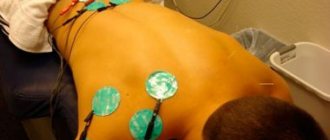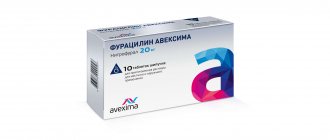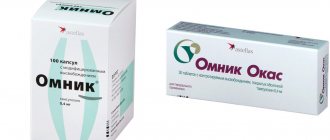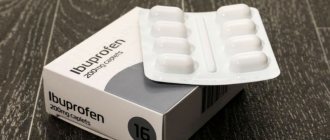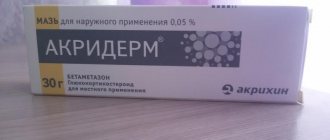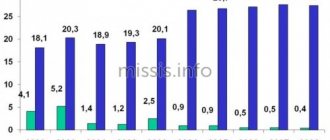Corticosteroids, what kind of drugs are they? Many, having seen the list, are afraid to take prescribed medications when they hear the word “hormonal”. Because it is associated with hormonal and metabolic disorders. But this is just a misconception. Of course, you should not take glucocorticosteroids without a doctor's prescription. But we cannot refuse to use them either. To dispel doubts about these funds, in our article we will highlight the main areas of application, indications and contraindications. I will definitely provide a list of medications for convenience in a table.
Briefly about steroids
As a small digression (and also for a better understanding of the information), it is worth talking about “native” steroid hormones.
Steroid drugs are a fairly broad group of drugs related to hormones. They can be independently produced in our body by the adrenal glands, being regulators of many processes.
The adrenal glands produce several types of natural corticosteroids:
- Adrenaline is produced in the brain and is the body’s main activator when there is an impending threat (it is also called the “fight or flight” response). It is responsible for a host of processes - dilates blood vessels in the brain, constricts peripheral vessels, increases heart rate, increases blood glucose levels, etc.
- Norepinephrine is a precursor to adrenaline. It is called the wakefulness hormone. And the effect is less impressive - it increases heart contractions and increases blood pressure.
- Corticosteroids are divided into 2 classes:
- mineralcorticoids (responsible for kidney function);
- glucocorticosteroids (they are used in synthetic form in medicine).
Steroid hormones affect almost every cell of the body, participating in multiple processes. They know how to change metabolism, have anti-inflammatory, anti-allergic effects, and regulate blood sugar levels. Steroids can even suppress the immune system and help with shock or toxicity.
It is precisely such extensive properties that could not go unnoticed by scientists. In 1948, cortisone was first administered to a patient with rheumatism. Due to unbearable joint pain, he did not get out of bed for 6 years. However, after a course of treatment he was able to stand up on his own.
With this discovery, a new round of medicine began, with the introduction of steroid drugs into practice.
Local corticosteroid therapy
Local therapy makes it possible to create a particularly high concentration of the active substance in the pathological focus and at the same time reduce the risk of side effects.
Treatment in the form of local injections and installations is widely used in the treatment of patients with uveitis (Table 6). The most common drug is dexamethasone. Triamcinolone acetonide (Kenalog), which has a prolonged effect, has also proven itself well, so it can be administered para- or retrobulbarly once every 7-14 days. Recently, a new drug, diprospan, has begun to be used, which consists of betamethasone disodium phosphate and dipropionate. The first component ensures the speed of onset of the effect, and the second - prolongation of action.
Table 6. Methods of administering corticosteroids to the eye
Prednisone and cortisone are not suitable for local therapy, since they act only after metabolic transformations.
In case of a massive inflammatory process accompanied by a pronounced exudative reaction, it is advisable to combine local use of corticosteroids with their systemic administration.
With local therapy, systemic side effects cannot be completely eliminated, since the drug, being absorbed at the injection site, can then spread throughout the body. The severity of the side effect of a drug substance depends on its type, activity, excipient used, the concentration of the steroid in it and the duration of treatment.
Mechanism of action of corticosteroids
Two groups of hormones are used as drugs: glucocorticosteroids (GCS) and mineralcorticoids.
GCS is prescribed for:
- replacement therapy for insufficient production of own hormones;
- synthesis suppression;
- as pathogenetic treatment using the properties of steroids.
The last point is most often used in medical practice. Active substances can suppress inflammation and allergic reactions, as an antishock agent, and are also used for immunosuppression.
Glucocorticosteroids have several uses to suppress the response. The first is to activate the synthesis of lipocortin, a special protein that cells produce in response to the effects of GCS. This protein suppresses the action of phospholipase (it is produced by the cell membrane in response to damage). Inhibition of this chain helps relieve external signs of inflammation - swelling, redness, pain, fever.
Lipocortin is generally quite multifaceted. It limits the reproduction of proteins and antibodies, providing an antiallergic and immunosuppressive effect.
Steroid hormones also interrupt the production of pro-inflammatory cytokines - information molecules that activate the cell's response to inflammation. They also negatively affect the genes of enzymes responsible for increasing the permeability of the vascular wall and the destruction of cartilage tissue. By the way, inhibition of proteinase production by corticosteroids makes them especially effective in the fight against joint diseases.
For anti-shock action, drugs with GCS are also used. They help stop the synthesis of shock mediators, increase the “excitatory” effect of adrenaline on nerve endings (this provokes vasoconstriction, increased blood pressure, and dilation of brain vessels).
Indications for use
Why are corticosteroid drugs valuable? I will answer for having a wide list of appointments. However, despite their high medical significance, they should be used with caution. Doctors prefer to start treatment without hormonal therapy, adding GCS to the course only if the basic process is ineffective.
Of course, some diseases require the mandatory administration of steroid drugs, but all of them are used according to special regimens.
When are glucocorticosteroids used:
- Inflammatory diseases - rheumatoid arthritis, vasculitis, chronic hepatitis.
- Diseases of the respiratory system - bronchial asthma, obstructive disease, respiratory distress syndrome (a critical condition in which pulmonary edema, acute hypoxia and respiratory failure are observed).
- Autoimmune diseases - glomerulonephritis, rheumatism, lupus, Crohn's disease.
- Nervous system diseases - early administration for back injuries helps reduce the risk of complications. The drugs are also used for osteochondrosis (when radicular syndrome occurs), neuritis, and multiple sclerosis.
- Infectious diseases - steroid drugs and reduce the body's immune response, in some cases they are prescribed to reduce the complications of illnesses. Thus, GCS is used for severe pneumonia in AIDS patients to reduce the risk of developing respiratory failure. For meningitis in children, taking it reduces neurological complications.
- Eye diseases - iritis, iridocyclitis, uveitis, scleritis (in the absence of infectious activity). The administration of GCS requires special caution; with an active bacterial or viral process, these drugs can mask the spread of infection, which leads to loss of vision. Usually drops and ointments are used for the eyes.
- Malignant blood diseases - leukemia, lymphoma.
- In acute shock conditions, a high dose of the hormone is used once at once (1 gram per administration).
- For the treatment of skin diseases - dermatoses, eczema, psoriasis, lichen ruber, atopic dermatitis.
- In organ transplantology.
Dosages are selected strictly individually. to calculate the minimum effective. This approach helps reduce the development of side effects. The introduction of one dose, even the maximum, cannot cause complications, as well as a short course (a week). Mini-therapy is used for non-life-threatening diseases, while severe systemic diseases require long-term administration of GCS.
To minimize side effects, there are various ways to calculate the treatment regimen - pulse therapy (administration of a large dose for 3 days), taking short-acting medications once every 2 days.
Release forms
In addition to creams, ointments, liniments, and injection solutions, corticosteroids are also available in the form of tablets and capsules. These medications include budenofalk, cortisone, cortineff, medrol, prednisolone. These medications are not used to treat skin conditions. They are necessary to treat diseases of the adrenal glands, rheumatism, bronchial asthma, Crohn's disease and many other ailments.
Topical corticosteroids are used to treat many atopic skin diseases, especially in children. And among such drugs, the modern medicine Elokom comes first. It is produced in the form of cream, ointment, lotion. The only contraindication for its use is hypersensitivity to the components.
Contraindications
Glucocorticoids, despite their wide range of applications, have a number of diseases for which their use is strictly contraindicated.
- Pregnancy can provoke adrenal insufficiency in the baby.
- Severe forms of hypertension.
- Osteoporosis - provokes an even greater decrease in calcium in the body.
- Diabetes.
- Mental illnesses, epilepsy
- Gastrointestinal ulcers.
- Active form of tuberculosis and syphilis (if there is no special therapy).
- The presence of an infectious process.
- Cushing's disease is an overproduction of adrenal hormones by the body.
When taking glucocorticoids for more than 2 weeks, the administration of live vaccines is excluded.
Features of prescription for pregnant women and children
If there are absolute indications during pregnancy, a course of GCS is possible, especially if the expectant mother was on constant therapy. Preference should be given to natural corticosteroids without the addition of a fluorine group.
Hormones penetrate into milk quite poorly, so using small doses during breastfeeding does not cause harm. The use of higher dosages may cause growth and developmental disorders in the child. And also disrupt the functioning of the hypothalamus - pituitary system, leading to endocrine disruptions.
For children, drugs are prescribed strictly according to indications, since long-term use of GCS leads to growth retardation. You can use nasal drops for allergic rhinitis or adenoids. The dosage of hormones in this form is minimal and does not cause systemic complications; moreover, only 4% of GCS is absorbed into the blood.
Is it necessary to have corticosteroid medications in a home medicine cabinet?
The presence of drugs from the group of corticosteroids in your home medicine cabinet is necessary. But this does not mean that you can buy and use them yourself. The question of which drugs in this group should be purchased, how to store them and in what cases to use them, should be asked to your doctor. This is especially important for:
- Allergy sufferers who have had episodes of urticaria or angioedema. Especially if they suffered anaphylactic shock.
- People suffering from severe bronchial asthma with frequent exacerbations.
The presence of medications from the group of corticosteroids at home is important for all people for whom they are prescribed for constant use (rheumatoid arthritis, systemic lupus erythematosus, systemic scleroderma, gout, etc.). The necessary supply will give them a guarantee of safety in the event of a temporary absence of these drugs in the pharmacy chain.
Side effects of corticosteroids
Undesirable effects occur when drugs are used for a long period in high dosages. Which exceed the physiological norms for the production of natural hormones. Also with abrupt withdrawal of drugs.
Modern administration regimens help reduce the number of adverse reactions. Inhalation administration is used, replacing systemic drugs with local ones (if symptoms are not expressed).
Steroids suppress the immune system. Therefore, the most common complication is infection. Accordingly, the risk of a virus or bacteria being attached is greatly increased. Most patients suffer from pneumonia, but there are also cases of severe forms of chickenpox (even death). Therefore, patients are not recommended to communicate with infected people during a course of therapy, provided that they have not had chickenpox.
Complications
There are also a number of systemic complications:
- Peptic ulcer - there is a risk of bleeding while taking it, especially when combined with non-steroidal anti-inflammatory drugs.
- Muscle weakness - the muscles of the limbs usually suffer, even to the point of problems with walking and cessation of physical activity. Long-term use in patients with bronchial asthma can cause myopathy of the respiratory muscles.
- Cataracts are a particularly high risk of development in children, therefore, when administering 10 - 15 mg per day, it is recommended to periodically check vision and the integrity of the lens.
- Mental disorders - usually insomnia, irritability, mood swings.
- Osteoporosis - it develops in approximately 30 - 50% of patients on long-term hormonal therapy. The drugs have a particularly great effect on the bones of the ribs and spine. Typically, to reduce the negative effect of calcium loss, patients are prescribed 1500 mg of Ca + 400 mg of vitamin D. For a group of people with reduced secretion of sex hormones (including postmenopause), estrogens or testosterone are included in therapy.
- Local skin changes - the most common complication is dry skin and thinning. The appearance of acne and stretch marks. Internal injections can cause atrophic changes in the skin and fatty tissue at the injection site.
- Diabetes mellitus - corticosteroids cause significant changes in the blood count, as well as increased glycogen production by the liver.
The most serious complication is Cushing's syndrome, a disease associated with increased concentrations of adrenal hormones in the blood. The most common cause of the disease is the medicinal nature of the disease. The main symptoms are obesity (with fat spreading into the face, creating a round, moon-shaped face and belly, leaving the limbs thin). Hormonal imbalance and sudden weight gain are reflected in the appearance of huge stretch marks, and possibly profuse acne.
There is an increase in blood pressure, excessive hair growth in women with irregular menstrual cycles (up to amenorrhea), and impotence in men.
Withdrawal syndrome
It is not only long-term use of corticosteroids that causes adverse reactions. A sharp restriction of the intake of drugs into the body leads to the development of adrenal insufficiency.
Our body is quite lazy. If hormones (or other substances that he can produce himself) come from outside, then his own production is gradually inhibited. The patient experiences weakness, weight loss, central nervous system depression, and decreased blood pressure.
To avoid such a reaction, therapy is carried out with a gradual reduction in dosage. If deficiency has already developed, then corticotropin is administered to neutralize it.
Mineralocorticosteroids
Having found out what corticosteroids are, it would not be a bad idea to learn about their classification. This group includes hormones of the adrenal cortex that affect mineral metabolism, mainly the metabolism of sodium and potassium. These steroids are responsible for regulating the water-salt balance. Unlike other corticosteroids, this type is not in great demand in medicine. Mineralcorticoids are prescribed for:
- chronic adrenal insufficiency, or hypocortisolism (a rare endocrine disease, as a result of which the adrenal glands lose the ability to produce sufficient amounts of hormones, primarily cortisol);
- syndrome of severe muscle weakness, accompanied by a significant decrease or complete cessation of motor activity;
- Addison's disease.
List of drugs: table
| Tradename | Active substances | Main action | Duration |
| Cortisone, cortisone acetate | Cortisone | Anti-inflammatory, anti-allergic. Most often prescribed to correct adrenal insufficiency. | Short acting |
| Lokoid, laticort, Hyoxysone, etc. | Hydrocortisone | ||
| Decortin, Prednisol. Descartin, etc. | Prednisolone | It can be used for intravenous administration, in the form of tablets, for injection into a joint, ointment, eye drops. | They are medium-acting drugs |
| Medrol, Metypred, Lemod | Methylprednisolone | ||
| Dexamet, Dexazone, Dexoftan, Maxidez, Oftan. | Dextamethasone | Have a prolonged effect | |
| Forokort, Kenalog, Azmacort | Triamcinolone |
Low-active agents
According to the classification accepted today, this group of drugs includes hydrocortisone, Cortade, Lokoid. And if the last two products are available only in the form of an ointment, then hydrocortisone can also be bought in the form of a solution or suspension for injection and injection into the joint.
Corteid is a cream whose active ingredient is hydrocortisone. The same active substance is included in Lokoid ointment. When using these corticosteroid drugs, side effects are extremely rare, and the main indications for their use are skin diseases, such as dermatitis, eczema and psoriasis.
Corticosteroids include the well-known prednisolone and methylprednisolone. However, even despite their weak activity, these drugs can only be used as prescribed by a doctor.

